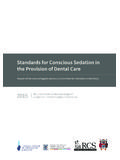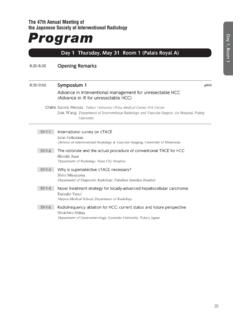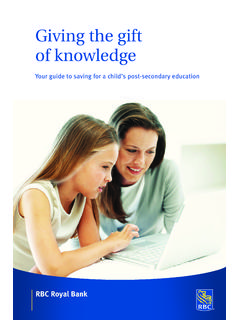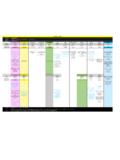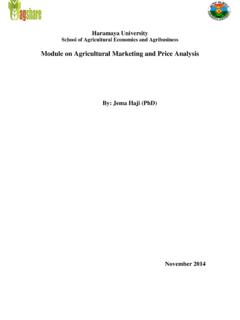Transcription of SAFE PRACTICE SCHEME 2017 - SAAD
1 THE safe sedation PRACTICE SCHEME A QUALITY ASSURANCE PROGRAMME FOR IMPLEMENTING NATIONAL STANDARDS IN CONSCIOUS sedation FOR DENTISTRY IN THE UK September 2017 Revised 10th August 2018 1 It is the responsibility of dental professionals to ensure both quality and safety in conscious sedation for dentistry. This document is directed to the evaluation of the provision of safe conscious sedation for dentistry and to ensure compliance with contemporary standards and guidance. The reference standards are those published by the General Dental Council (GDC) and current conscious sedation guidance for dentistry. Overall professional responsibility for safe , quality provision must be patient centred as highlighted by the Francis Report. National guidance directs that safety is of prime importance in the provision of conscious sedation for dentistry. This document gives providers, commissioners and the Care Quality Commission (CQC) a programme for the evaluation of conscious sedation in dentistry, with the aim of improving patient care.
2 The Society for the Advancement of Anaesthesia in Dentistry (SAAD) has produced this consensus document, based on contemporaneous national guidance for conscious sedation in dentistry. SAAD expects this programme to be used wherever conscious sedation for dentistry is practised in the UK. SAAD has defined the principles for the evaluation of safe sedation PRACTICE . This is applicable in principal in each devolved UK administration. This document defines a fundamental standard for evaluation and should not be amended for local use. Revised 10th August 2018 2 Contents 3 Reference 4 Evaluation 5 Appeals 8 The Evaluation Inspection 9 Evaluator Person 22 Proformas and Documentation sedation Staff Training & Experience Record*.. 23 Documentation for the 30 Exemplar Template 1 Evaluation Introductory 32 Exemplar Template 2 Letter of 33 Exemplar Template 3 Post-Evaluation 34 Exemplar Template 4 Minor Non-conformities 35 Exemplar Template 5 Successful 37 Evaluation 38 Review 39 Membership of the Working 39 * Requires completion before the inspection Revised 10th August 2018 3 INTRODUCTION Conscious sedation is defined as: A technique in which the use of a drug or drugs produces a state of depression of the central nervous system enabling treatment to be carried out, but during which verbal contact with the patient is maintained throughout the period of sedation .
3 The drugs and techniques used to provide conscious sedation for dental treatment should carry a margin of safety wide enough to render loss of consciousness unlikely. The level of sedation must be such that the patient remains conscious and is able both to understand and respond to verbal commands either alone or accompanied by light tactile sensation. Standards and guidance for conscious sedation in dental services have been produced. These documents are listed. Formal evaluation of conscious sedation in dental services is recommended as a result of that guidance. This quality assurance programme has been produced by SAAD to support the evaluation of conscious sedation in dentistry whether the service is delivered within the NHS or under private contract. It applies to all places of administration of conscious sedation in dentistry. It applies to both medically and dentally qualified practitioners and to all grades of practitioner whatever their specialty.
4 SAAD acknowledges the NHS England document Service Standards for Conscious sedation in a Primary Care Setting dated June 2017. An annual self declaration of compliance by use of a self-certified check-list adapted from this SCHEME remains only part of a governance process. SAAD would encourage commissioners to randomly monitor a selection of providers by adopting the full evaluation protocol laid down in this document, carried out by a person meeting the evaluation person specification (page 22). A programme of evaluation may be initiated either by a practitioner requesting evaluation, by an NHS service commissioner or by a third party who is responsible for clinical management or by the CQC; (the applicant). This quality assurance programme relies on evaluation by an individual trained and experienced in, and currently practising conscious sedation for dentistry. An evaluator specification is included in this document. THIS QUALITY ASSURANCE PROGRAMME AIMS TO PROMOTE A CONSISTENT APPROACH TO THE EVALUATION PROCESS THAT IS REASONABLE, FAIR, STANDARDISED AND TRANSPARENT.
5 Revised 10th August 2018 4 REFERENCE DOCUMENTS The contemporary standards and guidance documents which should be used for the evaluation of conscious sedation in dentistry are: 1. safe sedation PRACTICE for Healthcare Procedures: Standards and Guidance. Academy of Medical Royal Colleges 2013. 2. Conscious sedation in the Provision of Dental Care Standards and Guidance. Report of the Inter-collegiate Advisory Committee for Conscious sedation in Dentistry. The Dental Faculties of The Royal Colleges of Surgeons and The Royal College of Anaesthetists. April 2015. 3. NICE: sedation in Children and Young People 2010. 4. Quality Standards for Cardiopulmonary Resuscitation PRACTICE and Training Primary Dental Care. UK Resuscitation Council May 2017. 5. Standards for the Dental Team: September 2013. General Dental Council. 6. Commissioning Dental Services: Service standards for Conscious sedation in a primary care setting.
6 2017 These references are underpinned by: The Mid Staffordshire NHS Foundation Trust Public Inquiry, Chaired by Robert Francis QC, February 2013 HC947. Care should be taken to avoid the use of historical standards and guidance that have been superceded by the documents listed above. BY COMBINING THESE GUIDANCE DOCUMENTS PRACTITIONERS ARE REQUIRED TO TAKE APPROPRIATE STEPS TO PROVIDE A MINIMUM STANDARD FOR safe AND EFFECTIVE PATIENT CARE WHATEVER THE CLINICAL SETTING. Revised 10th August 2018 5 THE EVALUATION PROCESS It is essential that, at the outset of the evaluation, the applicant is made aware of the process. In summary this process will evaluate the following domains: 1. Premises 2. Personnel 3. Policies and care pathways 4. Patient information and consent 5. Patient assessment 6. sedation delivery and equipment 7. Recovery and discharge 8. Patient record keeping 9. Clinical activity, governance and audit 10. Patient satisfaction There needs to be a transparent trail of written correspondence and written acceptance of the evaluation process.
7 This must include the applicant s responsibilities and a record of how the process will be enacted before the process starts. The applicant should understand that the evaluation process aims to help achieve the contemporary standard and that this process is not a critical paternalistic examination. However it must also be understood that in the event of poor performance there will be a clear process to follow. Neither the evaluator nor SAAD will enter into discussions about the evaluation other than with the practitioner assessed or service commissioner. The cost of the evaluation should be agreed in writing, including who will be responsible and the terms for payment. The evaluation fee is payable prior to any visit. The standards and guidance documents references along with the checklists should be sent to the applicant prior to the evaluation visit. The applicant should be requested to fully complete the checklist appropriate for their individual evaluation returning it to the evaluator prior to the evaluation visit.
8 The evaluation programme requires the presentation of four live clinical cases of each technique to be evaluated. At the sole discretion of the evaluator the number of cases may vary. The techniques presented will be the only techniques evaluated by this SCHEME . The evaluation visit should be designed for minimal disruption of normal working PRACTICE . It is the responsibility of the applicant to obtain the valid consent of patients to be observed prior to the evaluation visit. In addition to the observation of the clinical cases, the evaluator will randomly select fifteen patient records and review a minimum of five patient records. Providers can expect additional records to be reviewed at the evaluator s discretion. Revised 10th August 2018 6 There should be a discussion immediately following the evaluation visit to debrief the applicant and explain the next stages of the evaluation process. On completion of the evaluation the evaluator will take one of the following three courses of action: 1.
9 Issue a written statement confirming that a satisfactory evaluation has taken place specifying the date, venue, team and technique. OR 2. For minor non-conformities ask the applicant to rectify the specified non-conformities and to confirm in writing that this has been done before a written statement will be issued confirming that a satisfactory evaluation has taken place. OR 3. Inform the applicant of any major non-conformities which require correction before the applicant can be re-inspected. In the event that original or new major non-conformities are still evident at a second inspection, the applicant will be provided with a detailed report of this together with a request for immediate action to be taken by the service provider. Where an evaluation has been requested by a third party applicant a copy of the report will be provided to that applicant. If a major non-conformity is reported that, in the opinion of the evaluator, is a direct risk to patient safety, the applicant will be informed in writing within 24 hours.
10 Within this written notice will be a recommendation that the provider will cease all conscious sedation techniques immediately. In this circumstance, it is expected that the applicant will fully comply with this request until a further inspection has confirmed that the identified non-conformities have been fully rectified. Failure to comply with this will lead to a formal report to the appropriate healthcare regulator. Again, if the assessment has been requisitioned by a third party then that third party will also receive a copy of the evaluator s report. A re-evaluation may be carried out not less than 28 days after the initial inspection. SAAD reserves the right to allocate a different evaluator for the re-assessment. The cost of re-inspection will be the same as the original assessment which is payable in advance of an agreed date of evaluation. There may be circumstances, which are non negotiable and at the absolute discretion of the evaluator on the day, where observation of fewer than four clinical cases may be acceptable.
